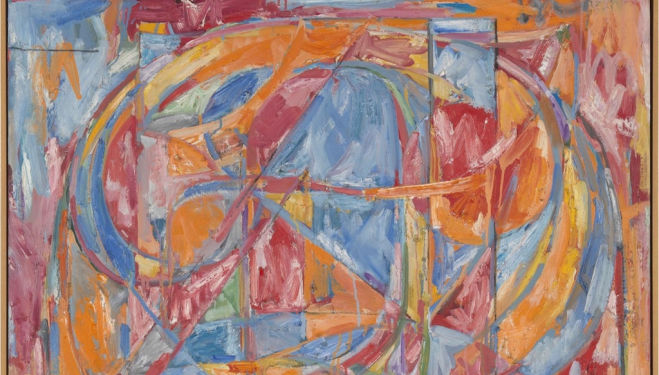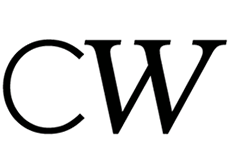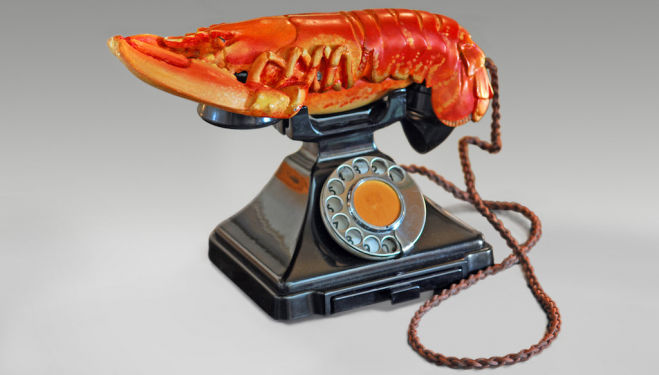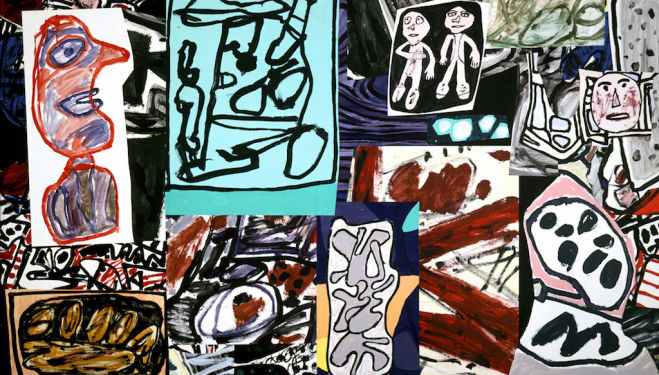
Johns is perhaps best known today for his 'flag' and 'target' paintings. These works broke from the Abstract Expressionist style of non-objective painting, with his representations of recognisable everyday objects. Instead of abstraction, Johns dealt in codes and iconography, appropriating symbols, geometric shapes and forms and turning them on their head. 'I tend to like things that already exist,' the artist once said. 'Take an object. Do something to it. Do something else to it.'
Predictably Johns’ trademark maps, flags, numbers, and targets abound in the exhibition. Opening with a cross section of his best-known works, it becomes apparent that the exhibition spins around two binaries – Johns’ transformation of the ordinary into the extraordinary, and recognition and abstraction.
It’s no surprise, then, that Flag, 1958, arguably one of Johns’ most famous works takes centre stage in the opening galleries. And too right – in the flesh it is simply beautiful.
The depicted flag occupies the entire picture plane, with the white stars and red and white candy stripes arranged exactly as they are on the actual American flag. But the rich texture of the canvas triggers a double take. While the form and symbolism of the flag is instantly recognizable, its aesthetic is curiously unfamiliar. John’s encaustic method – a technique which involved mixing colour pigments with hot wax to ensure quick-drying – enabled him to add layer upon layer of paint to the canvas without having to wait for the previous layer to dry. In Flag, the brush-strokes are thick, and rich.
Flag is prime example of Johns’ desire to destabalise the viewer. By using a pre-exisiting symbol as his subject matter, Johns questions how form can create meaning? Does a painting depicting a flag, represent a flag – an international symbol loaded with political, social, cultural and geographical meaning?
Johns presents a motif that is so familiar, that out of context, it becomes unfamiliar. Johns describes motifs like this is as ‘things the mind already knows’.
But there is so much more to Johns than his flags. Wandering round the galleries, his mixed-media paintings, sculptures, prints, collages and drawings from his later years speak of his lyricism, his depth and his steady maturation into an American master. The burst of colour and energetic brushstrokes in his ‘Paintings as Objects’ series testify to his metamorphosing palette, painterly style and desire to emphasise the material structure of paintings.
Painting with Two Balls, 1960, is a lively patchwork of blues, scarlets, oranges, blues and greens. In contrast to his more restrained mono-tonal canvases of maps and flags of earlier years, here, we see paint splashed, dripped and agitatedly brushed onto the canvas. The strokes are harsh rather than alluring; collaged newspaper articles emerge from beneath the paint on scrutinisation – a stark reminder to the work’s materiality.
While his work of the late 1950s, is more in tune with a strand of Abstract Expressionism known as Action Painting, Johns was predominantly preoccupied with materiality at this time – highlighting painting’s lack of emotional depth was key.
His works of the 1960s are born out of this mantra. We see brooms, rulers, wooden balls and studio objects embedded into the canvas. Painting with Ruler and Gray, 1960, is one of the first of John’s work to adopt this new vocabulary. The grey and white painted canvas is intersected by a pair of wooden rulers , which signaled the importance of measurement and ushered in a new approach to depicting and describing space.
It seems with each decade, Johns adopts a new creative process and approach to painting. His works in the 70s are dominated by an abstract but repeated geometric pattern of intersecting lines, known as ‘crosshatchings’, in the 80s we see an exploration of thought and memory and the transient nature of time, and in the 90s, the introduction of increasingly complex iconographic references to artists including Pablo Picasso and Edvard Munch. By the early 2000s he had embarked on the pared down and conceptual series, Centenary, with recent works including 5 Postcards, 2013 and Regrets, 2013 closing the exhibition.
While the exhibition is not chronological, the curatorial layout does feel somewhat like a list with room after room exploring the continuities and changes that have occurred over the past six decades.
Jasper Johns: Something Resembling Truth is long, very long, but it’s insightful, and the most comprehensive overview of his work this side of the pond for the last 40 years.
| What | Jasper Johns exhibition review, Royal Academy |
| Where | Royal Academy, Burlington House, Piccadilly, London, W1J 0BD | MAP |
| Nearest tube | Green Park (underground) |
| When |
23 Sep 17 – 10 Dec 17, Mon - Sun 10am - 6pm, Friday 10am - 10pm |
| Price | £17 (without gift aid), Concessions £12-16 |
| Website | Click here for more information |



